3D printing, also additive manufacturing, is responsible for creating a three-dimensional object or a component using CAD models.
It does so by imitating the biological process, where it adds layers of materials when making the physical part. 3D printing helps to produce functional shapes using less material, unlike the traditional manufacturing way.
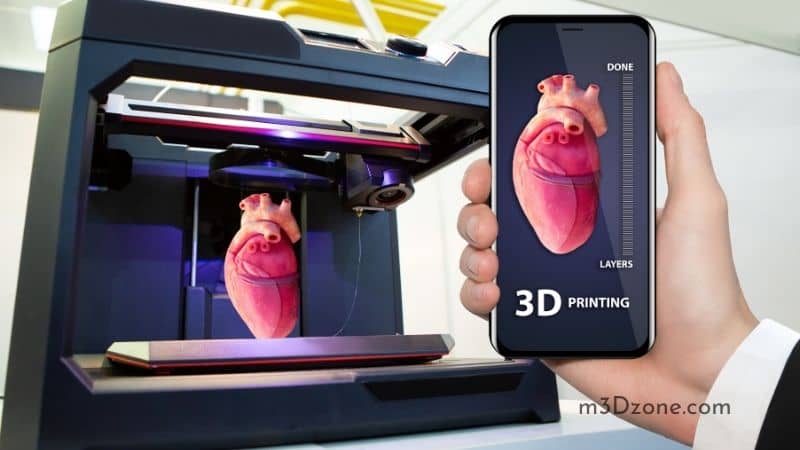
3D printing is used to create parts of a car, smartphone cases, fashion accessories, and construction in health sectors to create organs like hearing aids and many more. In fashion, they are used to create bulletproof and fireproof clothes. There are different 3D technologies from which all the industries build their 3D printers.
Quick Navigation
3D printing technology has been adopted by almost every industry as it helps develop designs.
This article will help you learn about 3D printers, from their uses to how they work to the different types of 3D printing processes.
What Is the Main Use of 3D Printing?
-
Construction Industry
There are numerous examples of 3D printing used in the construction industry. It is used in fabricating components used in building. Some of the 3D applications used in construction are extrusions such as cement, wax foam, polymers, powder bonding which include reactive bond, sintering, polymer, and additive welding.
-
Prototyping and Manufacturing
3D printer was made at first to help with rapid prototyping. The traditional injection- the model prototype was too expensive and took forever to complete a single model. With additive manufacturing, prototyping is fast and not as expensive as the first one. You can fabricate a component in an hour, unlike before.
The decreased time in prototyping has helped make the manufacturing process fast and cheap compared to before.
Due to the 3D technology, companies are now customizing their services, and even consumers can customize the products they buy by using web-based software. it has helped In the growth of the manufacturing industry.
-
Automobiles
Automobiles have been using 3D printing now for decades. The automotive industry uses additive manufacturing to create prototypes that help them come up with a new car model.
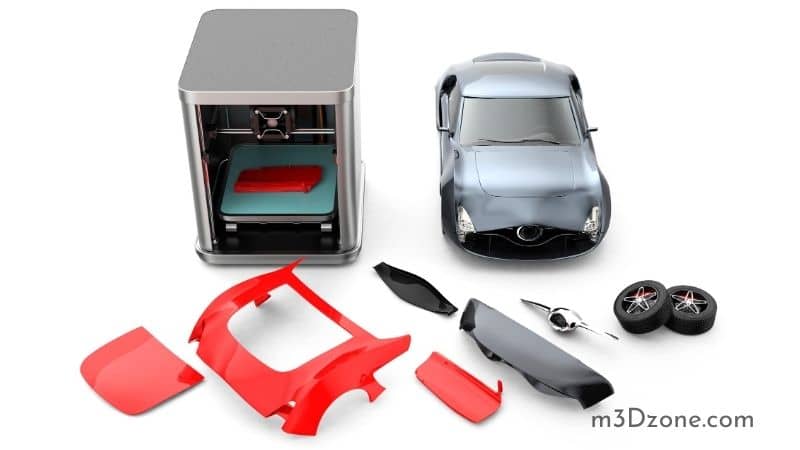
You can also use 3D printers to make high-quality and cost-effective vehicle spare parts. Apart from that, 3D technology has helped to augment the workflow in automobiles. This involves custom jigs, fixtures, and other tooling used in single-car, especially for high-performing machines.w
What Are the Benefits of 3D Printing?
-
Designs Are More Flexible
With 3D printing, complex designs are now easy to design, unlike the traditional methods of manufacturing. The traditional processors have restrictions that are not with 3D printing.
Before people embraced 3D printing, the price of buying printed organs for tissue engineering applications used to be more than that of real estate. Now, companies with considerable influence have introduced 3D printed organs in their production line and are advertising them.
-
Production of Prototypes at a Fast Rate
With 3D printing, manufacturers can produce objects at a faster rate. 3D printing methods have increased the speed at which the prototype is processing, which completes each stage faster than before.
Apart from that, 3D printing has a lower cost as compared to machining prototypes, which takes forever. It helps in completing each design modification at a more efficient rate. This has helped companies reduce the price of their 3D printed objects making more sales hence more profits.
-
Print When You Need
With 3D printing, you only print on demand as it doesn’t need a lot of space to stock up the inventory. This will help you save space and cost as you don’t need to print what you don’t need.
3D is designed to store all its files in its virtual library as they are printed by technologies known as CAD and STL. This means you can retrieve it any time you want the file and print it. Apart from that, you can make edits and still use the file.
-
Light Parts
Most printing materials used are plastic, although there are some metals used. This is advantageous to the automotive and aerospace industries, where they prefer lighter materials to make their products more efficient.
Objects can be created from different materials using 3D printing to acquire some properties like fire resistance, waterproof, and bulletproof when making certain objects.
-
Less Waste
Using 3D technology, you only produce 3D objects with the only required materials, which means there is less or no waste. Unlike the traditional method where objects are made from big chuck materials that are not recyclable and then the object is cut, leading to so much waste. By reducing waste, additive manufacturing has helped reduce production costs and hence more profit for the industries and manufacturers.
-
They Are Easy to Access
With time 3D printing has become more accessible to a point where local service providers offer 3D printing. This helps save time and transportation costs. With the traditional manufacturing methods, the services were found in certain areas and country making transportation expensive, and you spend a lot of time.
-
They Are More Environmentally Friendly
First, 3D printing conserves the environment by not wasting materials. Also, it uses less fuel as it uses lightweight materials. That way, the environment is preserved compared to the traditional manufacturing way, which uses excess materials.
-
Better Healthcare
3D technology has enabled better health care and saved more life as one can print organs using 3D printing. Parts like the liver, kidney, and heart. Apart from that, they help in developing sense parts like hearing aids. More advances are being developed using technology and further improving the health sector.
Related: 3D Printing Timeline
What Are 3D Printers and Their Uses?
3D printers are objects that allow the user to print an object in a 3-dimension, which is a computer-aided design (CAD) image. The process is also called additive manufacturing.
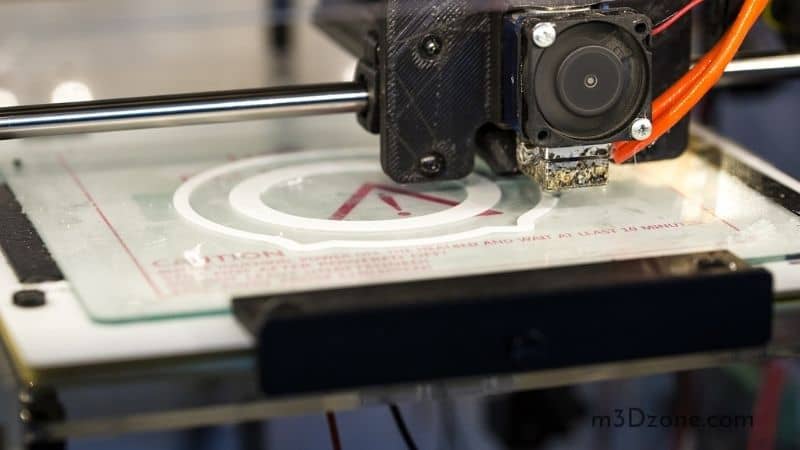
It helps producers cut on cost and time fast and doesn’t waste materials than the traditional manufacturing methods (see more details of what is 3D printing).
-
Fashion and Making Clothes
3D printers are used in coming up with new fashion statements and making clothes. The 3D printers have made designers affordable and brought about an immense range of new fashion trends.
3D technology is used in the alteration of the textile during production. This way, it has led to the creation of new textiles. An example is bulletproof, fireproof clothes that retain heat. More development and innovation are going on in the fashion industry, using 3D printers to try things.
-
3D Printed Jewelry and Art
3d printers have brought about a new world of jewelry and art that was not there with traditional jewelry. It has brought about individual and unique jewelry; also, one can now customize a piece cheaply using 3D materials such as polylactic acid filament (PLA), platinum, and gold.
3D printers creating 3D pieces that are comparable is easy and fast, unlike the traditional handmade and cast jewelry, which was too much work. Now with 3D technology, there are more printable materials that make many different jewelry designs.
With the jewelry 3D printers, you can create pieces from resin or wax on the design’s 3D model. The digital model can be edited easily and come up with different better models. This makes prototypes with 3D printing cheap and extremely convenient.
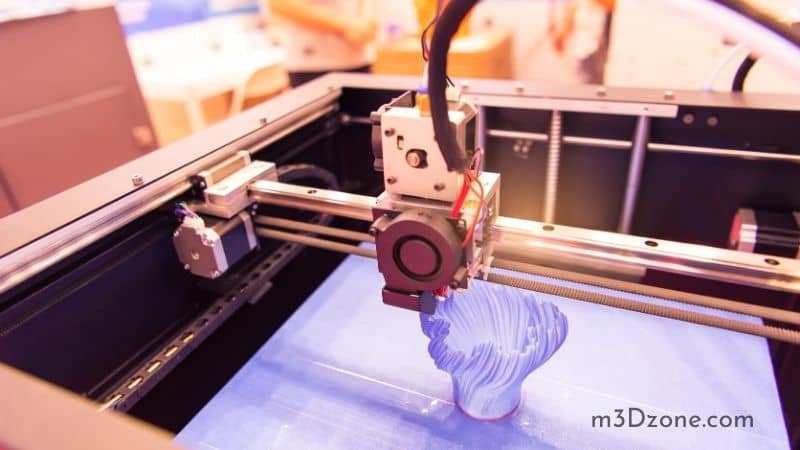
For buyers, their experiences have been raised a notch higher as they can now use the prototypes of designs they have created or made suggestions to ensure it is what they wanted before buying.
After confirming the design, the jewelry is 3D printed using the same workflow as the tradition, which results in spectacular pieces of jewelry. Jewelry pieces made using the 3D patterns are made using stereolithography (SLA) 3D printing technology.
Apart from jewelry, 3D printers have given new inspiration to artists. Using metal 3D printing technology, they are coming up with beautiful, unique pieces. An example of a dutch artist known as Olivier van Herpt is creating ceramic vases using 3D printers. Also, Gilles Azzarob, a digital artist, makes invisible to visible 3D images of voice where they use the sound waves from the voices.
-
Sculptures
Sculptures are another use of 3D printers. In case you use the 3D photographic scanning system, physical artwork is created. This way, a lot of new choices are created for customers. 3D technology has given artists new creation power. As long as they can conceive and design then they can produce.
An example is an artist in the Netherlands named Danny Van Ryswyk who has been creating 3D printed sculptures used in filmmaking and represents Tim Burton’s character.
How Does 3D Printing Work?
3D printing is a method of production and prototyping rapidly that is highly versatile. It has grown and developed over the few decades, where various industries have adopted it worldwide.
3D printing, which is also called additive manufacturing, is a part of manufacturing. The 3D printing techniques are creating objects where materials are added to an object one layer after the other.
The printing process starts by making a graphic model of the substance you want to print. The graphic designs are made using a software package known as Computer-Aided Design (CAD). This part is the most labor-intensive of the whole process. The programs used in this stage include Fusion360, TinkerCAD, and Sketchup.
The process of 3D printing begins by making a graphic model of the object to be printed. These are usually designed using CAD software packages, which can be the most labor-intensive part of the process. Programs used for this include TinkerCAD, Fusion360, and Sketchup.
If the product is complete, the models get tested extensively to ensure no defect in the final products. With 3D printing, you can come up with any prototype. The only thing that limits is your imagination.
With 3D printing, you can develop complex models like the CNC and create them at a cheaper cost compared to the traditional ones.
The next step after coming up with a graphic model is digitally slicing the design to print it. This stage is important as a 3D printer does not conceptualize 3D design the same as we do. In the slicing stage, the model is broken down into many layers. After that, every layer is sent to the printer head for printing or simply laying the layers in order.
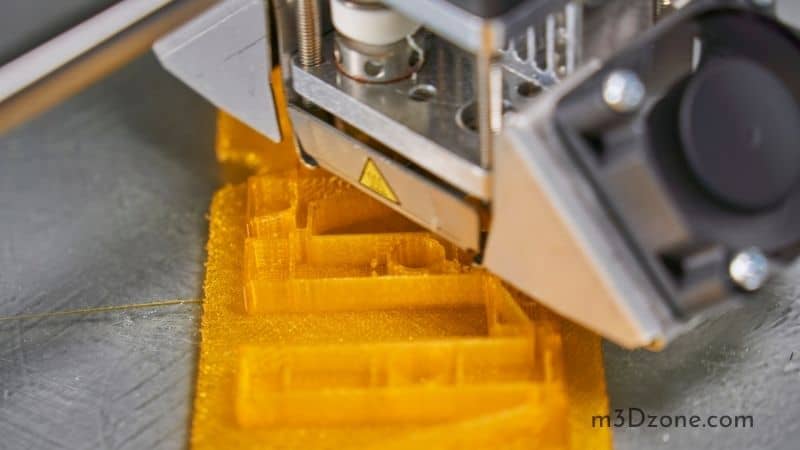
Programs like CraftWare and Astroprint are what are used in the slicing process. The slicer software is also used in filling the models to create a lattice structure in the solid model as it provides extra stability.
At this point, they print extremely strong materials with low densities by strategically adding pockets of air to the final products.
The software also helps in adding columns for support in case the model needs support. This is because plastic can’t get laid using thin air. Now the columns are to help the printer to be able to cover the gaps. After that, the columns are removed. After the slicer program has completed its work, then the data is sent to the printer.
Now at this point, the 3D printer work starts. It begins the printing process following the instructions by the slicer program but now using different methods. The method a printer uses depends on the type of printer you are using.
An example is when the 3D printing technology used is similar to the inkjet technology where the nozzle moves from back and forth, up and down; then, a thick wax or plastic is dispensed, solidifying and forms a new cross-section of the object.
On the other hand, multi-jet modeling uses many jets that work simultaneously and enhances more rapid modeling.
After that, the printer binds using the inkjet nozzles where they apply dry powder, and then glue or a binder that comes together and forms printed layers in each. To foam a layer, the binder printer has to make two passes. The fast pass deposits a thin powder coating, and then in the second pass, the nozzle passes the binder. (learn how to clean and unclog the 3D printer nozzle)
In the photopolymerization process, the liquid plastic is exposed to beams of ultraviolet light, which helps convert the plastic from liquid to solid.
You might like: Can you 3D print silicone?
Another 3D technology used in the printing process is sintering, which melts particles and then uses it to print every successive layer. After that, it is released on a laser to melt a flame retardant of the powder. It then uses the laser to solidify and print the layers. The sintering technology is also used in building metallic objects.
This process can take either hours or days, depending on the object’s complexity and size.
Carbon M1 is a faster technology which uses laser shot in a bed liquid to print. By doing so, it speeds up the design process. But the issue is that such a technology is complicated, expensive, and so far, it can only work with plastic. (see also, 3D printer versus laser cutting article)
The simple process is as stated below, no matter which technology you are using:
Start by producing a 3D model that you intend to print using CAD software.
Then, convert the CAD drawing to standard tessellation language (STL) format. Most printers use STL files but some others use ZPR and ObjDF.
Transfer the STL file or any other file that you converted into, the computer that is in control of the 3D printer. At this point, designate the size and the printing orientation.
Ensure the 3d printer is all set by setting up all the machines. For example, you need to refill polymers or the material your printer uses, binders, and any other consumables the printer needs.
At this point, start the machine and wait for the process to finish. Check the machine regularly to ensure there is no error during the process.
Once the printing is complete, remove the printed object from the printer.
After that, it is post-processing, such as brushing off the powder and washing it to remove any water-soluble material from 3D printing tools.
Types of 3D Printing Technologies and Processes
There are different types of 3D printing technologies and processes used in 3D printing. Below are the types of technology and how they work.
1. Stereolithography (SLA)
SLA technology is the original industrial 3D printing process. It is perfect for producing 3D model parts detailed, has smooth surfaces, and has a high tolerance.

With SLA, it finishes surfaces to look nice and helps in the parts function by testing how it fits after assembling. An example is perfect in the medical industry as it is applied in anatomical models. For SLA parts, the 3D system uses Viper, iPros, and ProJets.
2. Selective Laser Sintering (SLS)
The SLS works by melting nylon powder into solid plastic. The SLS parts are from thermoplastic materials, which makes them durable, and can be best for testing functional and supporting living hinges and snap fits. The downside is their surface is rougher compared to SL. Since the parts are strong, they don’t require any support.
The build platform is utilized to support many different parts in a single build. Most SLS parts are used as prototype models that at some point will get injection molded.
3. PolyJet 3D Printer
Polyjet is another 3D printing process that has a twist in it. It can fabricate parts that have different and many properties, materials, and colors.
Designers use the Polyjet to prototyping elastomeric or in cases where they are over-molding a part. In case the design is single and plastic rigid, then other technologies like the SL or the SLS are better as they are economical compared to Polyjet. this leads to a reduction of prices in commodities.
The Polyjet process is best for over-molding and silicon rubber models. The technology helps you to save on the early tooling which happens in the development cycle. You can iterate and validate the design fast.
Related: 3D Printing vs Injection Molding
4. Digital Light Processing (DLP)
The DLP printing technology is almost similar to the SLA. The difference between the two is that DLP uses a digital light project to help flash a single image in every layer at the same time; in other words, it has multiple flashes for the larger parts.
The projector is a digital screen, and the images of every layer are made of square pixels, which bring about a layer formed from the small rectangular blocks called voxels.
Also, compared to SLA, the DLP technology is much faster in printing time. This is due to the feature where the layers are exposed simultaneously, unlike where the cross-sectional area is traced with the laser point.
The light is projected to the resin using the LED screen or the ultraviolet light directed to the surface by the Digital Micromirror Device (DMD). The DMD is responsible for controlling where the light is projected by providing a light pattern on the surface.
5. The Metal 3D Printing Range at Proto Labs
This technology uses the laser concept Mlab and the M2 machines on metals 3D printed parts.
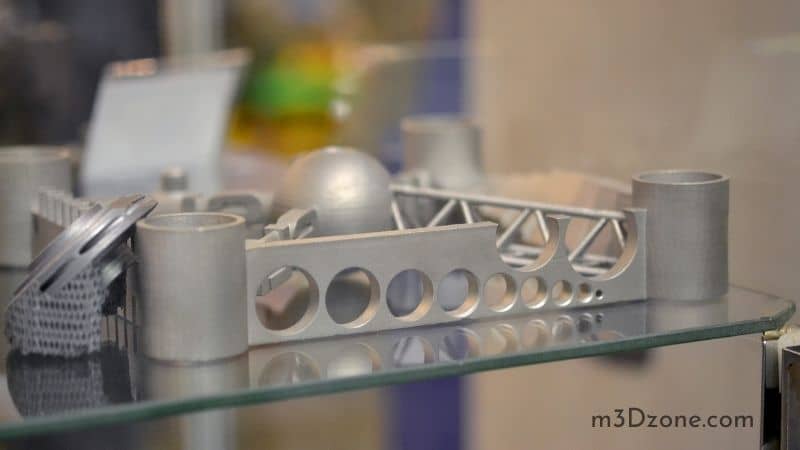
6. Multi Jet Fusion (MJF)
It is similar to the SLS; its functional parts are also built from nylon powder. But the difference is for multi-jet fusion (MJF), instead of using the laser to sinter the nylon powder, it uses an inkjet array that applies a fusing agent on the powder’s bed. After that, a heating element is passed over the bed, and it fuses each layer.
With this method, the result is consistent mechanical properties compared to SLS, and the surface is better finished. The process also speeds up the build time, which helps in lowering the production cost.
7. Fused Deposition Modeling (FDM)
The FDM technology is a desktop 3D printing technology used for plastic parts. It functions by extruding a plastic filament layer to layer on the build platform. The technology is a cost-efficient and fast method in producing physical designs.
It can be used to test functionality but should be avoided as its parts are a bit rough on the surface and are not as strong.
8. Direct Metal Laser Sintering (DMLS)
The metal 3D printer brings about new possibilities for metal parts models. The process used at Protolab on the 3D print metals is the Direct Metal Laser Sintering (DMLS). The technology is used to reduce metal and multiple parts assemblies to single parts or a much more lightweight part with internal channels.
DMLS is applicable in prototyping and production as the parts are dense as those produced with the traditional manufacturing processes.
9. Electron Beam Melting (EBM)
EBM is a metal 3D printing technology that uses electrical beams controlled by the electromagnetic coil that melts the powder. The bed is heated up and is in vacuum condition in the build period. The material used is the one that determines the temperature used to heat the material.
Conclusion
3D printing has brought about more possibilities in many industries and companies. Apart from that, it has reduced the production cost. 3D printing is used in almost all industries, as seen in this article. It has especially benefited the medical industries as one can create body cells and other organs.
Recommended Reading
3D Printing With Wood Filament
Can you print with 3D filament wood? The wood filament remains a composite that combines a PLA base material with wood dust and other powdered derivatives.
How to Recycle Failed 3D Prints? 4 Ways to Do This Easy!
How to recycle failed 3D prints is a very common question asked in the 3D printer community. There are several recycling strategies to help you deal with this.
PLA vs ABS 3D Printing. Know the Differences!
PLA and ABS are 3D materials with unique benefits and drawbacks. Let's dive deep into PLA vs ABS 3D printing differences and see which is better for you & why.
